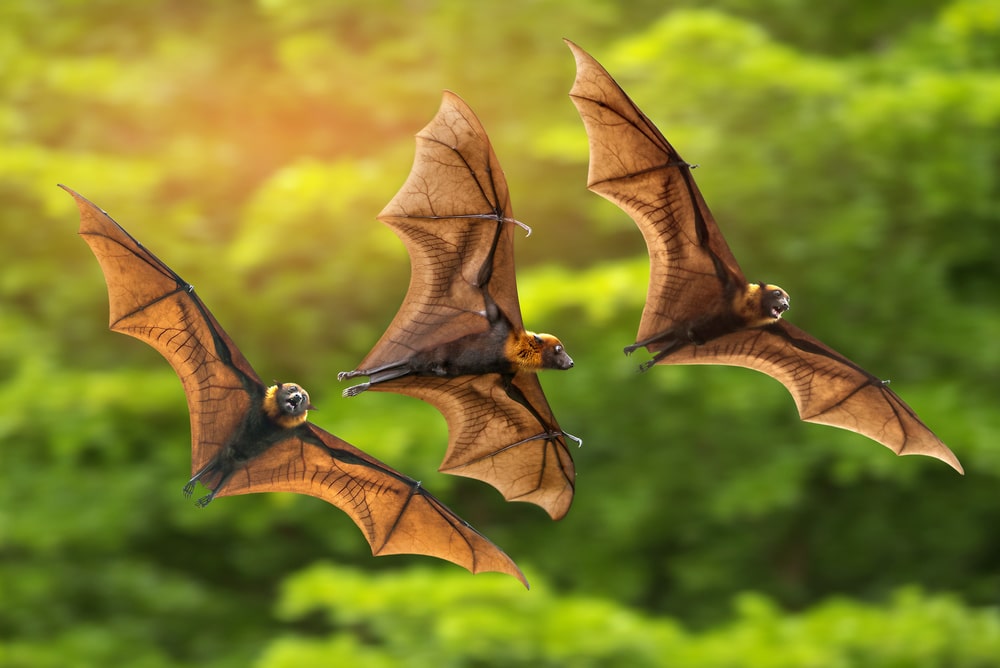Horror writers over the years have picked bats to play the villains in some of their books but, in reality, they’re heroes in the garden! Because October is Bat Appreciation Month, I’m sharing an updated version of an earlier post on why bats are so important.
Interesting Bat Facts
Here are some interesting facts about these fellow mammals.
- Bats are the only mammals that fly. There are some mammals, like gliders, who can glide, but bats are the only ones with wings. They’re actually more maneuverable than birds and some species can even fly up to 99 miles per hour!
- The largest bat in the world is the Flying Fox, native to the South Pacific. Its wingspan can reach up to six feet! They eat mainly fruit but also love cicadas.
- The smallest bat in the world is Kitti’s Hog-Nosed Bat, also known as a Bumblebee Bat, native to Thailand. It weighs less than one penny and is only an inch long. They feed on insects.
- Bats can live 20 to 40 years.
- Bats are not blind. Their eyesight is better than ours. It’s just that their hearing is even better than their vision. They can locate a human hair by a process called echolocation, this is why they don’t really get “caught” in people’s hair.
- Bats are communal—good to each other. They’ll share their food with bats that may not have gotten to eat.
- There are about 1,200 species of bats in the world, with 48 species native to North America. There are only three species of vampire bats—all native to South America.
- About 30% of bats are nectar eaters. These bats are responsible for pollinating over 500 species of plants. Some of the best known are avocados, bananas, figs, peaches, guavas, mangos, and agave. No bats, no tequila! And because bats are very good at dispersing seeds, they help to diversify their habitats—including the habitat of the cacao. No bats, maybe no chocolate either!
- 70% of bats are insectivores, eating up to their own weight in insects in one night. One bat can eat up to a thousand mosquitoes an hour!
- A mother bat generally has just one baby a year. She can locate her baby in a cave filled with hundreds of bats by its sound and smell. That she has only one offspring a year is one of several reasons bats are on the decline. The main reason is the loss of habitat. Out of all the species of bats native to the United States, several are listed as endangered and nearly 40% list as threatened.
Invite Bats to Dine in Your Yard
To encourage bats to dine in your yard, it helps to have a water source, such as a birdbath. Planting night-fragrant flowers to attract night insects may help—Evening Primrose, Nicotiana, Moonflowers, Four O-Clocks just to name a few. You could also hang a “bat house” under eaves.
Don’t use toxic pesticides in your yard. That suits me just fine. I’ll sit on my deck and let the bats do the work!
Say Thank You to Our Bat Friends
The next time you see a bat, remember that they’re helping keep the mosquitoes in check so you can enjoy your yard on summer evenings and maybe even helping to provide the chocolate in that brownie you’re eating.


Could BumbleBee bats survive over here? ,It sounds easier than Bee Keeping.
Thank you for your article on bats; very interesting & necessary little creatures.
Well, while they both are pollinators, they pollinate different things. Bats pollinate only certain fruits and bees pollinate many many other things.
Nice thought, though. While pollinating, they could be munching on mosquitoes, too….